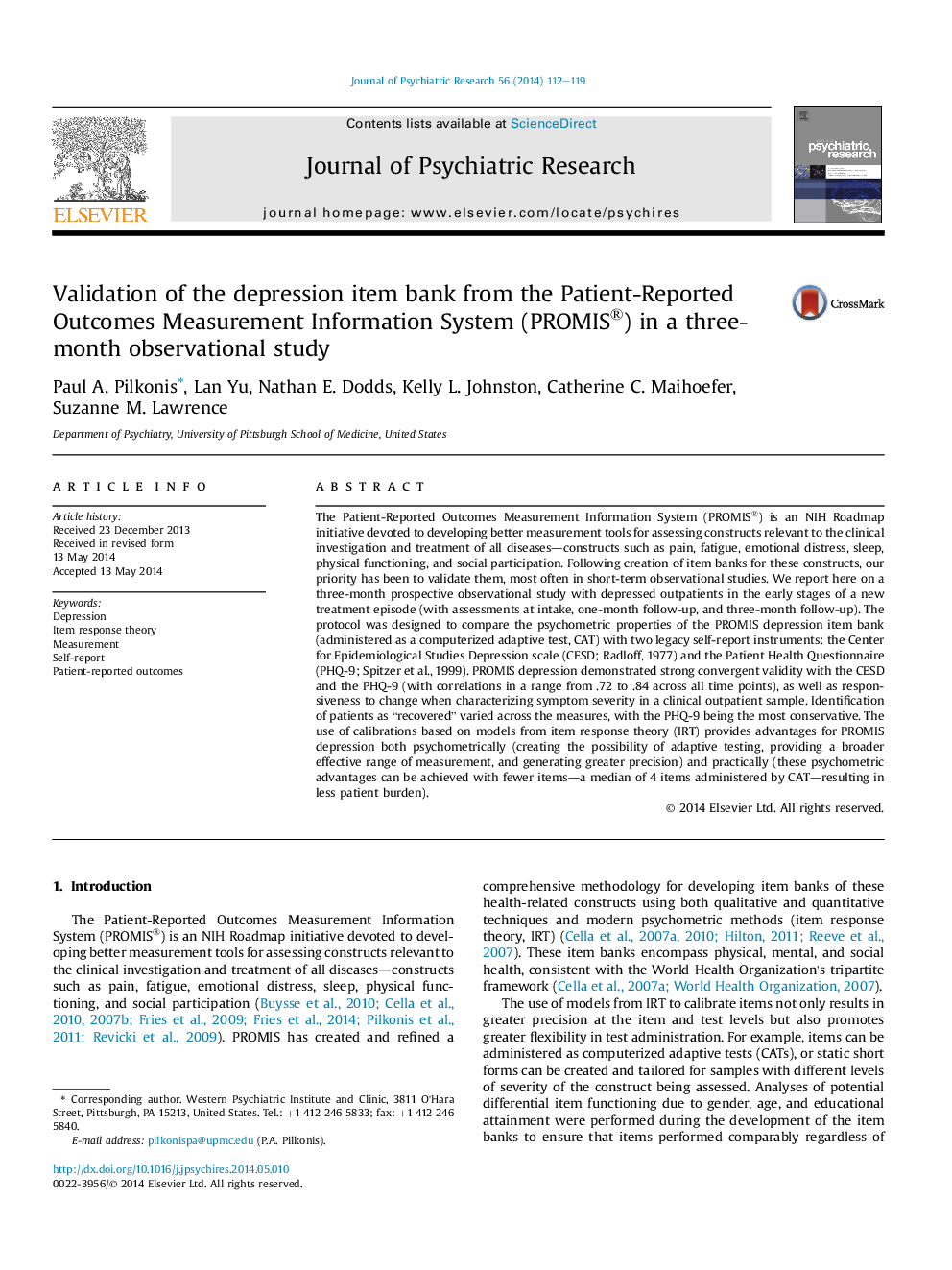| کد مقاله | کد نشریه | سال انتشار | مقاله انگلیسی | نسخه تمام متن |
|---|---|---|---|---|
| 326991 | 542678 | 2014 | 8 صفحه PDF | دانلود رایگان |

• PROMIS Depression demonstrates strong convergent validity with the CESD and PHQ-9.
• A PROMIS score of 60 suggests depression of some clinical significance.
• PROMIS scores are more normally distributed than those from the other 2 measures.
• PROMIS Depression and the CESD classify more patients as recovered than the PHQ-9.
• The PROMIS computerized adaptive test for depression requires a median of 4 items.
The Patient-Reported Outcomes Measurement Information System (PROMIS®) is an NIH Roadmap initiative devoted to developing better measurement tools for assessing constructs relevant to the clinical investigation and treatment of all diseases—constructs such as pain, fatigue, emotional distress, sleep, physical functioning, and social participation. Following creation of item banks for these constructs, our priority has been to validate them, most often in short-term observational studies. We report here on a three-month prospective observational study with depressed outpatients in the early stages of a new treatment episode (with assessments at intake, one-month follow-up, and three-month follow-up). The protocol was designed to compare the psychometric properties of the PROMIS depression item bank (administered as a computerized adaptive test, CAT) with two legacy self-report instruments: the Center for Epidemiological Studies Depression scale (CESD; Radloff, 1977) and the Patient Health Questionnaire (PHQ-9; Spitzer et al., 1999). PROMIS depression demonstrated strong convergent validity with the CESD and the PHQ-9 (with correlations in a range from .72 to .84 across all time points), as well as responsiveness to change when characterizing symptom severity in a clinical outpatient sample. Identification of patients as “recovered” varied across the measures, with the PHQ-9 being the most conservative. The use of calibrations based on models from item response theory (IRT) provides advantages for PROMIS depression both psychometrically (creating the possibility of adaptive testing, providing a broader effective range of measurement, and generating greater precision) and practically (these psychometric advantages can be achieved with fewer items—a median of 4 items administered by CAT—resulting in less patient burden).
Journal: Journal of Psychiatric Research - Volume 56, September 2014, Pages 112–119